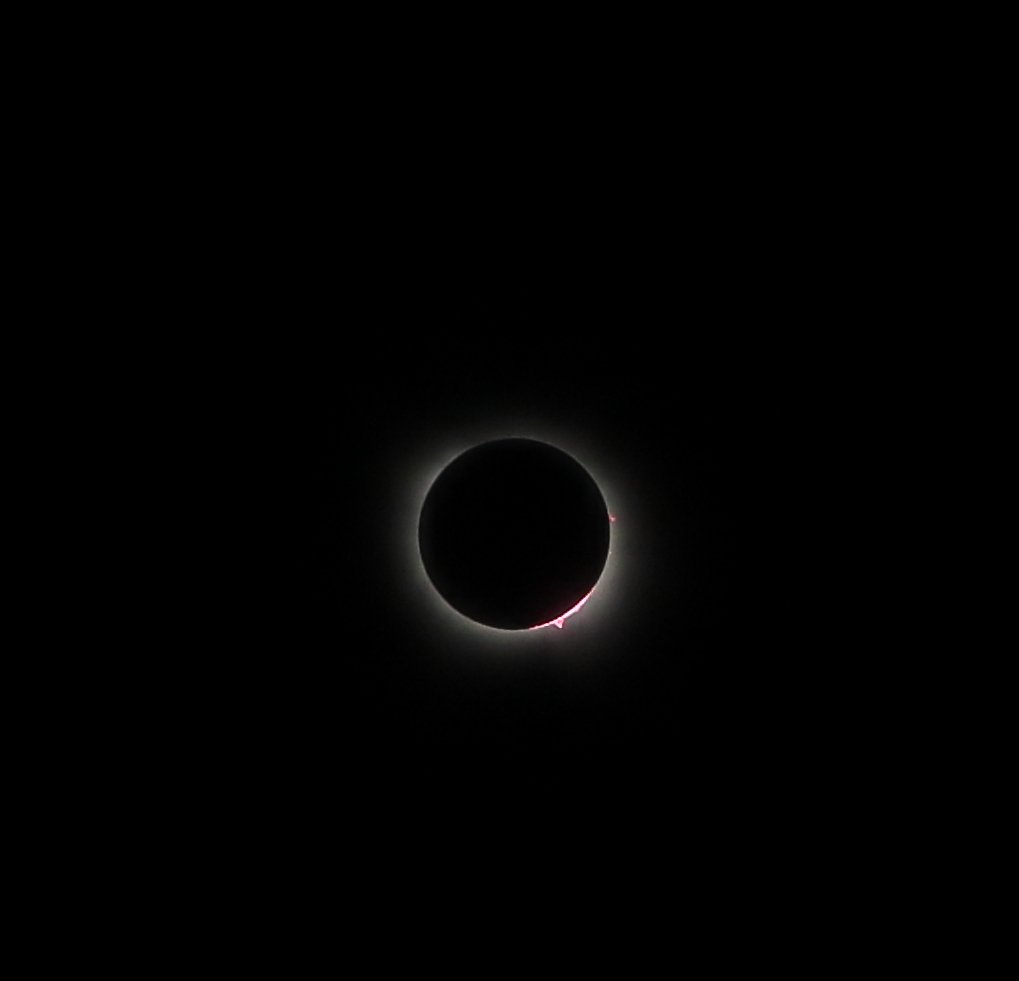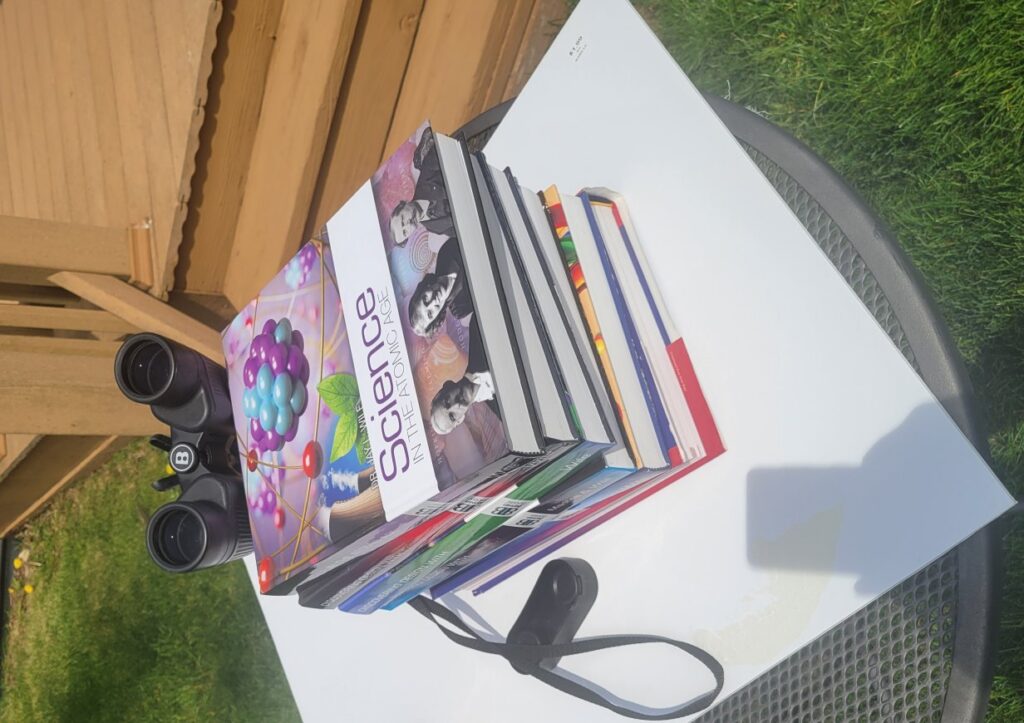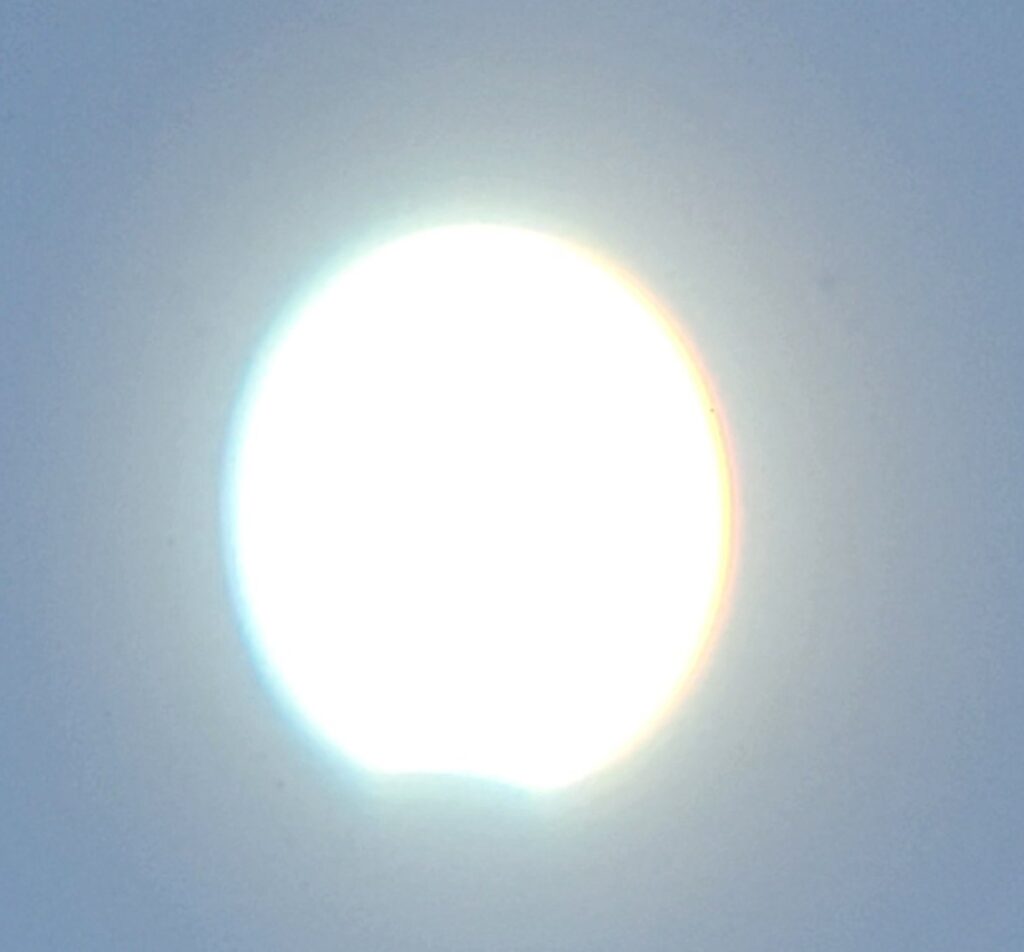The area where I live had a great view of Monday’s total solar eclipse. As a result, I was able to simply watch the event from my backyard. We had some friends and family over to join in the fun, and it was a great afternoon. Before showing you the images and video I shot, however, I want to show you a great picture taken by a student in my Memoria College course, Bryan Henslee. He was also in the path of totality, but he was in Texas. Here is his shot of the total eclipse:

The moon has blocked off most of the sun, but you do see its atmosphere (the corona). The pink colors are from solar prominences, which are loops of the sun’s plasma that rise from the surface but stay connected to the sun.
None of my images are nearly as remarkable as that one. I did set up a digital video camera, and here is a video of before and after the total eclipse, which is sped up by a factor of 10:
The camera doesn’t do well with the glare, so it’s hard to see the moon. If you look closely, however, once the ball of light gets small, you can see a dim disc inside it. That’s the moon. The small dot you see below and to the right of the sun is Venus. My daughter (Dawn Perdue) got a great shot of it:

While everyone was equipped with eclipse goggles, I also set up a binocular projector that allowed people to see the eclipse indirectly:

The binoculars projected an image of the sun onto the white sheet, and that image showed the first moments of the eclipse really well:

It then produced these images as the eclipse progressed:

The colors are caused by glare and the lens, so once the moon came close to completely covering the sun, looking at the eclipse through the glasses was better.
One of the people who was with us had traveled from Virginia to see the eclipse. He had experienced one total eclipse before, and he enjoyed it so much he wanted to see another. I am not sure I enjoyed it as much as he did, but if I make it to 2045, I will watch the next total eclipse that passes through a large portion of the U.S. from my rocking chair.
